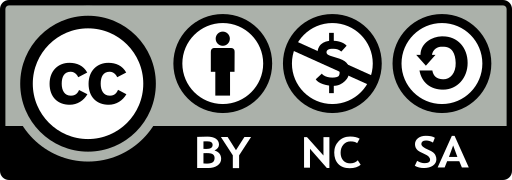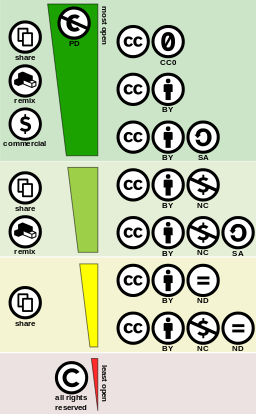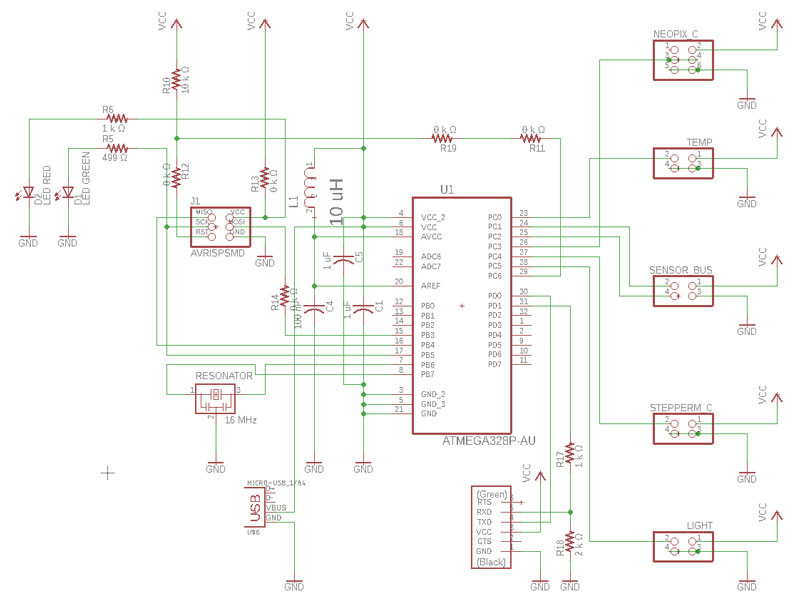Invention, Intellectual Property, and Income
Week 20 · [ 30.5.2018 - ]
- Create and document a license for your final project
- Develop a plan for dissemination of your final project
- Prepare drafts of your summary slide (presentation.png, 1920x1080)
- and video clip (presentation.mp4, 1080p HTML5, < ~minute, < ~10 MB)
- and put them in your root directory

This week, during the Neil's lecture and afterward, I skimmed through the range of licenses available. I was already a little bit familiar with Creative Commons licence, since I have learnt it for adding a licence on some of my works.
Where most of the licences seem to be for licensing software, such as the MIT License, the Creative Commons is for any creatice work, such as art work and designs.
Creative Commons
Creative Commons is an international, multi-stakeholder nonprofit organization. It is diversely-funded by individuals, foundations, corporations, governments, and other institutions and agencies. Creative Commons aimes at helping people to legally share their "knowledge and creativity to build a more equitable, accessible, and innovative world", using the full potential of the internet for society development, growth and productivity. Their work spans a variety of different areas and partners working to create a more vibrant commons, such as arts and culture, open access, education and OER, open data, legal, open science and technology. For this, Creative Commons provides free, easy-to-use copyright licenses to make a simple and standardized way to retain copyright while giving the public permission to copy, distribute, edit, remix, and build upon one's creative work–on conditions of the creator's choice, all within the boundaries of copyright law.
Every Creative Commons license ensures licensors get the credit for their work they deserve. What is the different when compared to for example patents, which are national and having limited duration property right relating to an invention, every Creative Commons license works around the world and lasts as long as applicable copyright lasts (because they are built on copyright). These common features serve as the baseline, and on top of which creators can choose to grant additional permissions when they decide how they want their work to be used.
ShareAlikeIf a creator decides to allow derivative works, she may also choose to require that anyone who uses the work to make that new work available under the same license terms. This idea is called “ShareAlike” standing for helping the digital commons grow over time. ShareAlike is inspired by the GNU General Public License, used by many free and open source software projects. Licensees must credit the creator, keep copyright notices intact on all copies of the work, and link to the license from copies of the work.
Licence Features
So, when considering which license to apply to my work, I need to ask myself what types of reuse I would like to encourage, and license accordingly. When choosing a license type, I should answer in two questions.
When considering for example this documentation website, in the beginning of Fab Academy, I made following decisions regarding licence features:
- Do I want to allow derivative works or not? // Yes, No, Yes, as long as others share alike
- Do I want to allow commercial use or not? // Yes, No
This returned me a license, regarding which This work is licensed under a Creative Commons Attribution-NonCommercial-ShareAlike 4.0 International License (CC BY-NC-SA 4.0). This will be the one that I will use also fo my Final Project.

The licence means, that anyone is allowed to:
- Share // copy and redistribute the material in any medium or format
- Adapt // remix, transform, and build upon the material
Under these terms of Licence Conditions:
- Attribution // a reuser must give appropriate credit, provide a link to the license, and indicate if changes were made.
- NonCommercial // a reuser may not use the material for commercial purposes.
- ShareAlike // if a reuser remix, transform, or build upon the material, she must distribute my contributions under the same license as the original.
- No additional restrictions // a reuser may not apply legal terms or technological measures that legally restrict others from doing anything the license permits.

Fab Licence
Fab Licence allows a reuser to reproduce, modify, distribute, perform and display for any purpose, but requires him to acknowledge a "project name". Copyright is retained and must be preserved. The work will be provided as is; no warranty is provided, and users accept all liability.
The MIT License
The MIT License is a software license, that gives total freedom and rights to any person obtaining a copy of the software to use, copy, modify, merge, publish, distribute, sell or sublicense the software. The only condition is that the original MIT license text must appear in any derivative work, even if the license changes.
Summary
Where most of the licences seem to be for licensing software, such as the MIT License, the Creative Commons is for any creatice work, such as art work and designs. I decided to license all the content of this documentation website and my final project utilizing the Creative Commons license of the Attribution-NonCommercial-ShareAlike 4.0 International License, appreciating the condition, that people acknowledge the creators. I am glad to distrubute my project and if someone finds it inspiring to utilize, respecting the work I have done and mentioning me in their project. The programming codes will be licensed using the MIT license.
There is no intention to make any incomes with this project. The project has been for my own learning and originates from my interest in building something aesthetical but useful. The weather in Finland with the fours totally different seasons so the weather and outside temperature is very changeable throughout the year, which makes it interesting to keep track of it. Also, any visual meter makes it easier for small children to get an general idea of the weather conditions outside.
Moreover, I am looking forward to future development of my project, since I have already some possible next steps on my mind.
Because of my backgroung in education, my perspective is in learning, and especially meaningful learning, and passion and being hooked on learning. For sure, this is for my own learning, and to be familiar with the processes of digital fabrication availble in the Fab Lab context. Furthermore, the intention is in how to utilize and disseminate this in the educational field.
I have noticed how this field of digital fabrication and design thinking covers almost all the skills, competences, and knowledge considered necessary on the 21st century. Moreover, "Understanding of and the ability to deal with technologies is seen as ever more important in society and working life. Digital fabrication may be the next generation’s 'information technology'." (Pitkänen & Andersen, 2018.)
This is why I am willing to disseminate and present this project as an inspiration and tangible object involving many kind of learning, for others, such as teachers, students, and hobbyists. My main focus is on teachers, though, and in aiming to support and empowerteachers to prepare the next generation for a rapidly changing and unknown future. I would like to see more people finding how they can learn through real-life based, complex problem-solving tasks through discussing, sharing, appying digital fabrication appropriate, arguing on their choises and reflecting on their learning.
I see that this project and idea of the LED screen with some history graphics has some nice future possibilities to develop the current project further.
- First, in addition to present a current outside temperature and small temperature history, it can be assigned to show forecast temperatures.
- Second, there are a lot of possibilities to present with this type of simple graphics just by changing the sensors or input device (and in this way learn to use and utilize new components and devices) such as the history or statistics of
- Noise level on the room // in order to notice users about the actual noicce level and risks of defect of hearing
- Accidents/ certain period of safe vs. risk situations // to indicate the quality of work practices and safety systems
- The amount of spent water // to notice users save our natural resources
- The level of pollutant or pollen in the air
- et cetera
What I need to reconsider in design is reducing the amount and costs of materials. For sure, this is partially a "design product" but I still need to consider if there would be better and cheaper solution what comes to material choises and the design itself.
For further development, e.g for downloading the data and presenting it also via some (smartphone) application, a bluetooth module can be added to the FTCI -pin header on current design (thanks to resistors R17 and R18). Moreover, a few extra pin headers make it possibe to add some extra features, such as a stepper motor.

Draft structure of a Presentation Video
| PERIOD OUT OF ~60 SECONDS | CONTENT | |
|---|---|---|
| 10 sec | Short Intro of me and the project | |
| 20 sec | Fabrication Phases and Processes used | |
| 20 sec | Device in action | |
| 10 sec | Future possibilities |


